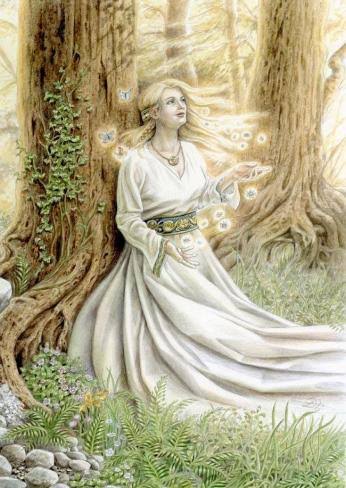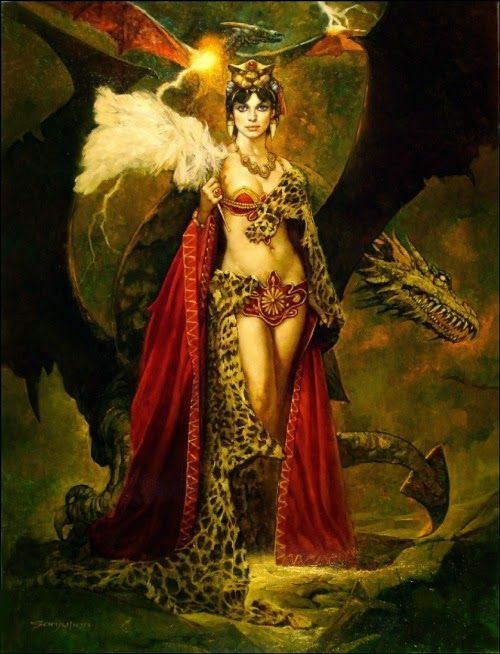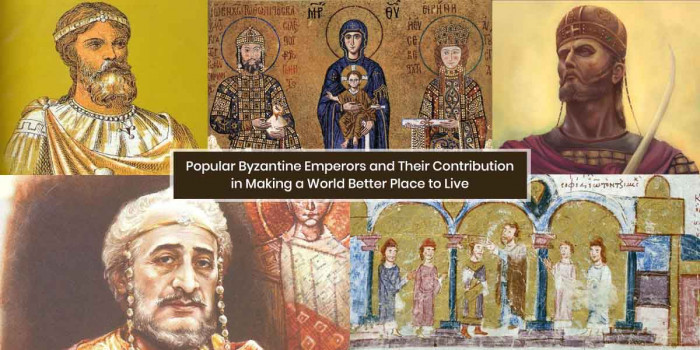Greek, Roman & Other Gods of Nature in Different Mythologies & Their Characteristics
The term nature refers to the concept of gods and goddesses in mythology. Read about several gods of nature in different religions and their power.

In nature worship, a nature deity is in charge of natural forces, like vegetation deity, the solar deity, water deity, and other phenomena such as trees and volcanoes. In ancient religions, deities are related to the forces of nature. Many cultures relate goddesses with fertility, rivers, animals, and the earth itself.
In African mythology, Aja is an Orisha, the spirit of the forest. She is a patron of the forest and several animals in it. She holds the secrets of botany and is a master of healing herbs.
In Nigeria and the Benin Republic, he is a farming deity and a fighter against sorcery. He is related to the annual new harvest of white African yam.
In Brazilian Candomblé, he shows one of the Orisha of agriculture, together with Ogum. Osaniyan is the one-eyed, one-legged orisha of healing herbs.
Egyptian Mythology
In Egyptian Mythology, Ash was the ancient Egyptian god of oases. He was identified by the ancient Egyptians as the god of the Libu and Tinhu tribes. Ash was known as the lord of Libya and corresponded with the area of modern Libya.
Ash was depicted as a human whose head was one of the desert creatures. Geb was the Egyptian god of earth and a member of the Ennead of Heliopolis. He could be considered the father of the snakes.
Aztech Mythology
Xōchipilli is the god of art, flowers, dance, and song in Aztech mythology. It has been suggested by Wasson that the statue of Xochipilli depicts a figure in the throes of entheogenic ecstasy. The statue appears to have dilated pupils, suggesting an effect of hallucinogenic mushrooms.
Earth Goddess

In Rome, the goddess was Terra Mater or Mother Earth. Tellus was another name for Terra Mater or a goddess. Tellus was one of the twelve Roman agricultural deities, and her abundance is showed by the cornucopia. For the Greeks, Gaia was the personification of the Earth.
She was the consort of Uranus. Maria Lionza is the Venezuelan goddess of nature, love, and peace. In polytheistic religion, the earth is represented as a goddess and is associated with the god of heaven as her spouse. In other religions, the mother goddess has an elaborate cult and has assumed the function of fertility for land and human beings.
Earthquakes
Several people believed that earthquakes originate in mountains. In Africa, the concept of mana is strong. It is believed that death in the underworld is the major cause of earthquakes. The earthquake is driven by noise or poking with the pestle of a mortar.
Tides
The tides are caused by the moon and can be found around the earth. This natural phenomenon gives rise to cults, but the flow of the coastal waters has stipulated mythological concepts.
Fertility

Juno is a popular Roman goddess related to marriage and fertility. The Romans had several minor deities associated with fertility and childbirth.
Juno Lucina ruled childbirth and brought childbirth into the light. Asase Ya is the goddess of the Ashanti people, ruling fertility. She is the wife of deity Nyame and mother of deities, including the trickster Anansi.
Aphrodite is the Greek goddess who rules procreation and pleasure. Vegetation and birds are related to her worship.
Parvati is the popular goddess of the Hindus. She was represented as the huntress. Ceres was the goddess of agriculture and fertility and was associated with the Greek goddess Demeter and a goddess of agriculture.

Inanna was the Sumerian goddess of war and fertility. She was the female deity in her culture.
Enheduanna, daughter of the Mesopotamian king Sargon, was appointed by her father. Ishtar was the goddess of fertility and sex in Mesopotamia. She was represented by the lion and an eight-pointed star. She might have been connected with the goddess of Inanna, but her attributes were not identical.
Freyja was the Norse goddess of sex and fertility. She was also the goddess of war and gold. Gefjon was the Norse goddess of plowing and also the aspect of fertility. Fecundias was another Roman goddess of fertility. Ala is a deity of mortality and is worshipped by Nigeria’s Igbo people. Rosmerta was a fertility goddess associated with abundance.
She can be found in Gallic-Roman culture and is often depicted with a cornucopia. Hathor is the Egyptian cow-goddess associated with fertility. Guan Yin was associated with fertility.
Mountains, Forests, and Hunting

Cybele is the mother goddess and the only goddess known to represent Phrygia. She was associated with meteoric iron and stones. She was assimilated into Greek culture as a mystery goddess while overlapping with characteristics of Gaia. In Rome, she was a mother goddess and was transformed into an ancestress of the Romans as a Trojan princess.
Diana was the Roman goddess of nature, and the moon is associated with the Greek goddess Artemis. Her name is derived from a word for daylight, so she has a history as a sky goddess as well.
Artemis, in Greek religion, is the goddess of wild animals, vegetation, and childbirth. Her function varied from place to place and was accompanied by nymphs in mountains and marshes. Read about the Gods of Air from Greek mythology.
Artume was a huntress goddess and was a part of the Etruscan culture. Adgilis Deda was a Georgian goddess associated with mountains.
Mielikki is the goddess of forests and hunting and the creator of the bear. Medeina is the Lithuanian goddess who rules forests and trees.
Sky, Stars, and Space

Nut was the Egyptian goddess of the heavens. Aditi was associated with the primal universal substance and can be seen as a wisdom goddess of space and the heavens. Iluri was the ancient Syrian goddess of mountains.
Sea, Rivers, Oceans, Rain, Storms
Asherah, a Ugaritic goddess who is mentioned in the Hebrew scriptures, is a goddess who walks on the sea. She is identified in the Hebrew Bible in the books of Exodus. The Hebrew Bible suggests that the poles were made of wood.
Danu was an ancient Hindu river goddess who shares her name with an Irish Celtic mother goddess. Tefnut was an Egyptian goddess and wife of the god of Air. You can also read about the gods of rain in different mythologies and their powers.
Vegetations, Animals, and Seasons
Demeter was the Greek Goddess of agriculture and harvest. In Greek religion, she is the daughter of deities Rhea and Cronus. Her name indicates that she is a mother. She was worshipped like Sparta and especially at the festival of Chthonia at Hermione in Argolis. She also appeared as a goddess of birth and marriage.
Her attributes were connected with her character as goddess of agriculture and vegetation. In Greek art, she resembled Hera. Furthermore, she was sometimes riding in a chariot drawn by horses and dragons. Other times, she was seated upon a throne with her daughter.
The Horae were the Greek Goddess of the seasons. The Dance of Horae was associated with spring and flowers. The Horae were honored by farmers who planted and tended their crops in time with the setting of stars. Epona protected horses, donkeys, and mules. Her name contains an allusion to the horse.
She is the patron goddess of mares and foals. She played an important role in the Gallic region. Her appearance in art varies depending on the origin of each representation. You can also read about the Greek god and Goddess of Food in Mythology.

Ninsar is the goddess of plants. Her birth resulted from Enki (Sumerian god of water), who followed a period of gestation and lasting nine days. She was also known as Lady Earth. Kupala was the Slavic goddess of the harvest and summer and was connected with fertility and sexuality. Maliya was associated with rivers and mountains. In Gaelic mythology, Cailleach Bhéara is a creation goddess. She governs the winter months between Samhain (1 November) and Bealltainn.
Do you know other facts about other gods of nature? Drop your comments below.
Popular Posts
Top 10 Sharpest & Deadliest Swords In History
In classic mythological movies, books and television, we’ve seen those audacious sword-wielding heroes smiting the enemi...
Augustus Perez
List of Water Deities from Different Mythologies
Water deities are the gods and goddesses who had the powers to control the elements of water and ruled over all the fresh and saltwater of the earth. Here’s a list of water deities from different mythologies.
Rishika Gupta
Winged Lion: The Terrifying Mythical Creature In Different Mythologies
A mythological creature, a winged lion dates back to ancient times. This flying lion-like creature has origins in Heraldry, Christianity, Mesopotamian, and Greek mythologies.
Ethan Stephans








